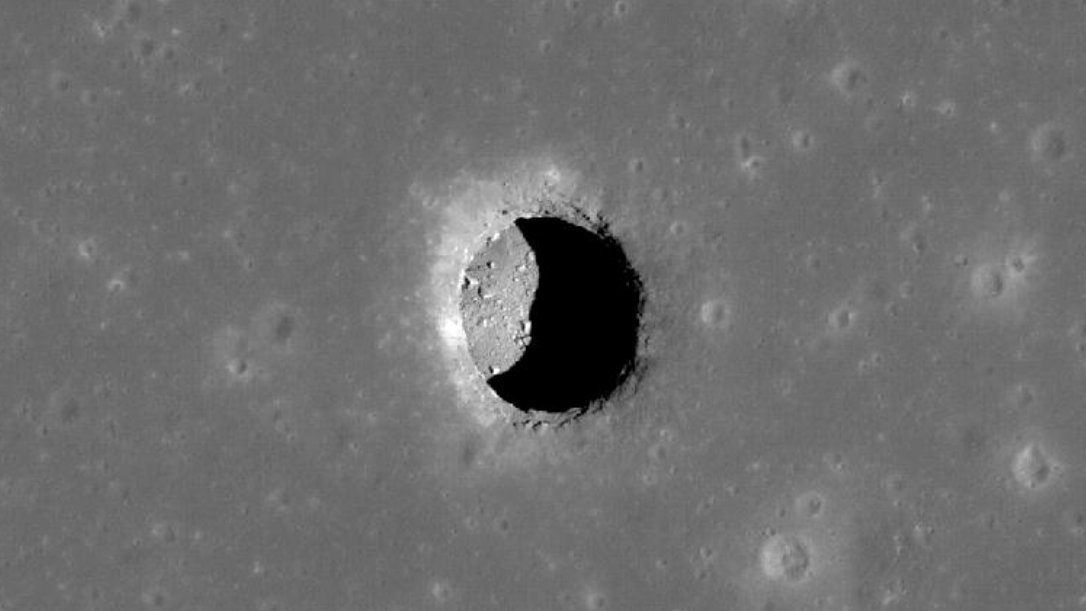
We might've been to the moon, but our celestial neighbor still holds many secrets. One of them, however, has just been unearthed — err, unmooned? — by a team of international researchers. For the first time, they've proved the existence of a cave on the moon.
The cave is located in the moon's Sea of Tranquility, some 250 miles (400 kilometers) from the Apollo 11 landing site, and it's 130 feet (40 meters) wide and 10s of yards long. "These caves have been theorized for over 50 years, but it is the first time ever that we have demonstrated their existence," Lorenzo Bruzzone, a professor at Italy's University of Trento, said in a statement.
The researchers found their evidence in data from NASA's Lunar Reconnaissance Orbiter (LRO), originally captured by the Miniature Radio-Frequency (Mini-RF) instrument in 2010. Using new processing techniques, the team reanalyzed the data — and they spotted radar reflections indicative of a cave. "The most likely explanation for our observations is an empty lava tube," said Leonardo Carrer, a researcher at the University of Trento. And while this is the first of its kind that the team has uncovered, there are likely many more.
While the mere existence of the cave is exciting in itself, it holds much promise for future lunar exploration. The lunar surface is a very inhospitable place, where surface temperatures range from 260 degrees Fahrenheit (127 degrees Celsius) to -279 degrees Fahrenheit (-173 degrees Celsius). And that's not to mention the intense solar radiation, which can be up to 150 times that on the Earth. As such, lunar caves could be used for shelter by astronauts.
Related: The 'hole' on Mars making headlines could be crucial to Red Planet exploration
"This research demonstrates both how radar data of the Moon can be used in novel ways to address fundamental questions for science and exploration and how crucial it is to continue collecting remotely sensed data of the moon," said Mini-RF principal investigator Wes Patterson of the Johns Hopkins Applied Physics Laboratory. "This includes the current LRO mission and, hopefully, future orbiter missions."
A paper about these results was published on July 15 in the journal Nature.







